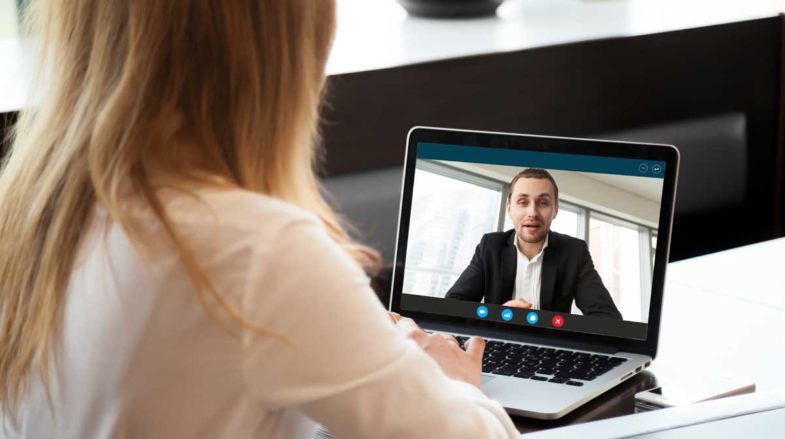In an attempt to help reduce the spread of the COVID-19 virus, many people are working remotely. In the ever-expanding world of technology, staying connected and meeting via technology has never been easier. The internet offers many easy-to-use tools for conducting online meetings such as WebEx, Zoom, and GoToMeeting. In order to lead effective online meetings, webinars, or conference calls, consider the following few tips.
Steps to Effective Online Meetings
PREPARE
-
Understand the technology
Familiarize yourself with the technology you plan to use hosting the event. Prior to your meeting, log on to verify everything works properly. This allows you to anticipate and resolve potential technology issues.
-
Prepare materials
If your meeting requires a presentation, make sure it is clear, concise, and easy to follow. Limit the amount of text and increase the use of graphics and applicable pictures.
-
Prepare an agenda
Prepare your meeting agenda with detailed goals that help you and your participants maintain focus, avoid getting off-topic, keep track of time, and stay engaged. The agenda should specify the list of talking points related to project status updates and allocated times anticipated per topic. If appropriate, email the agenda to each participant prior to the event. Allot time to solicit feedback, invite recommendations, and allow for pre-meeting preparation by attendees.
-
Create a plan for monitoring discussion
At the conclusion of your meeting, consider providing time for questions and further discussion. However, with an online platform, this can easily get out of control. Create a structure for accepting questions (whether via an instant messenger option or a virtual raised hand that allows a participant to unmute when asking a question). Follow a similar process for discussion, anticipating the potential need to hear multiple perspectives.
-
Inform participants
Provide attendees with necessary information such as login criteria, start time, and meeting duration. Distribute logistical instructions that help minimize the use of limited meeting time to navigate menus, access audio, or clarify general technical questions related to the meeting. Notify participants if you expect them to participate via video and if they should plan to mute their phones/computer microphones to reduce distracting background noises.
DURING THE MEETING
-
Start on time
Open your meeting at the scheduled time. Once the meeting begins, establish the ground rules and communicate your purpose as well as your plan for the meeting. If expedient, ask a participant to take notes for future review.
-
Manage your plan
Follow the agenda to avoid unnecessary conversations and distractions. Maintain the purpose of the meeting and keep track of time.
-
Describe the discussion and question-asking process
At the beginning of the meeting, set clear expectations for questions and discussion to eliminate interruption during the meeting.
-
Be clear and concise
When presenting, slow down your speech and enunciate well. Remember, if you are using an on-screen presentation, your audience may not be able to see you and your presentation, simultaneously, and must rely on the clarity of your spoken word.
-
Communicate next steps
Identify action items that require follow-up or questions you will address at a later time. This accountability helps improve future productivity
POST MEETING
-
Solicit feedback
For team meetings, ask participants for their feedback. Process suggestions and do your best to implement them into the next meeting.
For client meetings, follow-up with an email, outlining topics that were covered and decisions that were made.
-
Follow up
Remember to address any unanswered questions or tasks that must be completed post-meeting
-
Assess
Personally assess the event, noting what went well as well as what needs improvement. Then, brainstorm ways to improve future presentations.
When done properly and with mindful preparation, conducting online meetings can be a very effective way to keep in touch and communicate with your team and with clients.
